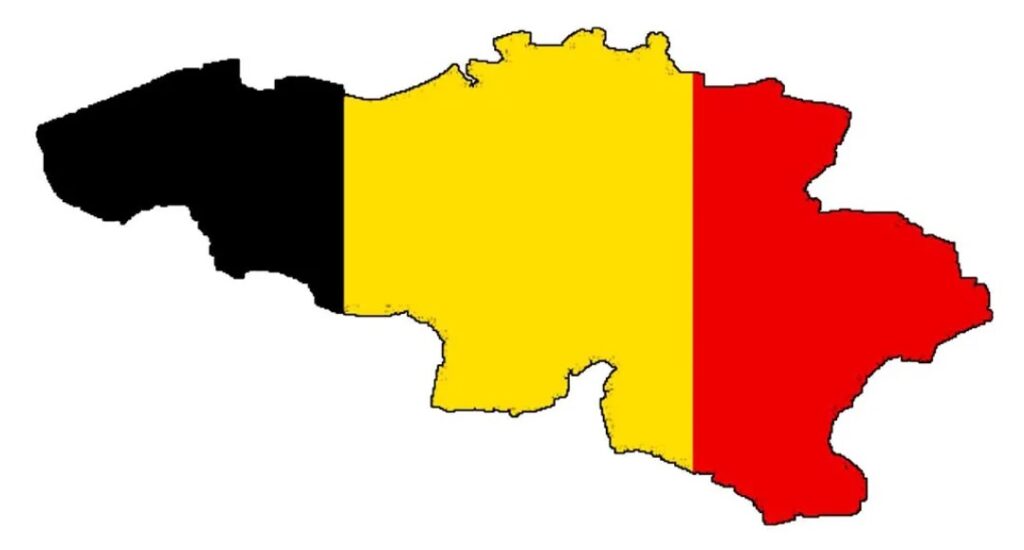
Belgium, officially the Kingdom of Belgium, is a tiny country of 30,528 square km and a population of around 11.5 million.
It is bordered by the Netherlands (north), Germany (east), Luxembourg (southeast), France (southwest), and the North Sea (northwest). It is most known for its beers, waffles, and chocolates.
Brussels
I came here on my first trip to Europe back in 1996. But as it was one of those whirlwind tours of Europe, my recollections of this and other places is quite low. While those tours show you a lot, they blur together quickly and short of a camera roll tick box there is very little that really sticks in your mind, other than you had been there.
The most recognisable thing to see in all of Belgium is a two foot tall, bronze statue of a boy taking a leak.
It is called the Manneken Pis and is about my only real recollection of coming here the first time around.
The tourist blurb even tells me that it has his own dresser and thousands of different costumes for any occasion imaginable. The chances of seeing him dressed in something eye-catching are quite high.


It is near the Grand Place (which I am sure I saw but don’t really recall) in Brussels. As we buzzed past this time, the Grand Palace was covered in scaffolding.
Antwerp
Antwerp is the largest city in Belgium by area and historical records show occupation since the 2nd century. For us though it was a series of flying visits (several visits all with little or no time) as many of our trains transited through the place. The station is amazing with multiple tiers of platforms all running on top of each other. Space is a premium and they have have responded accordingly.



Antwerp has been known as the diamond capital of the world for several centuries. The diamond trade in the port started nearly 500 years ago when the first rough stones were brought over from India. today 85% of the world’s rough diamonds, 50% of the polished diamonds, and 40% of industrial diamonds are passing through the diamond district — highlighting its status as the diamond capital of the world.


Ghent
Ghent is the third largest city in Belgium and primarily functions as a port and university city. It dates back to the middle ages and was originally built at the confluence of the Rivers Scheldt and Leie. Ghent is a compact city with all attractions within walking distance from one another.
there are Two tourist quarters – the Historical Centre which has the historical buildings and monuments and the Arts Quarter which has the main museums.
This place is amazing. We came on a day when there was two separate music festivals on and the next day was the Belgian National day. To say the place was hopping was an understatement. The town is full of stunning old buildings and castles, which (without a ton of temporary stages and bars set up around them) would have made for some fantastic photos.






We dodged the human traffic of the festivals and did our best to hit the big tourist spots. We managed to get near the old Fish Market, Kunsthal (13th century Monastery), Lievekaai St Antoniuskaai (a really funky bridge and canal) St Bavo’s Cathedral, Belfry, museum, Saint Nicholas Church, St James Church, and Town Hall.










Without a doubt the highlight for me was the temporary (or at least I hope that they were) urinals that were set up in the middle of the street.
No walls, no privacy just a 4 way trough plugged directly into the sewer system. How else do you deal with large numbers of people drinking and partying in the heart of town.
Not sure what the ladies were supposed to do. I didn’t see any alternative options.
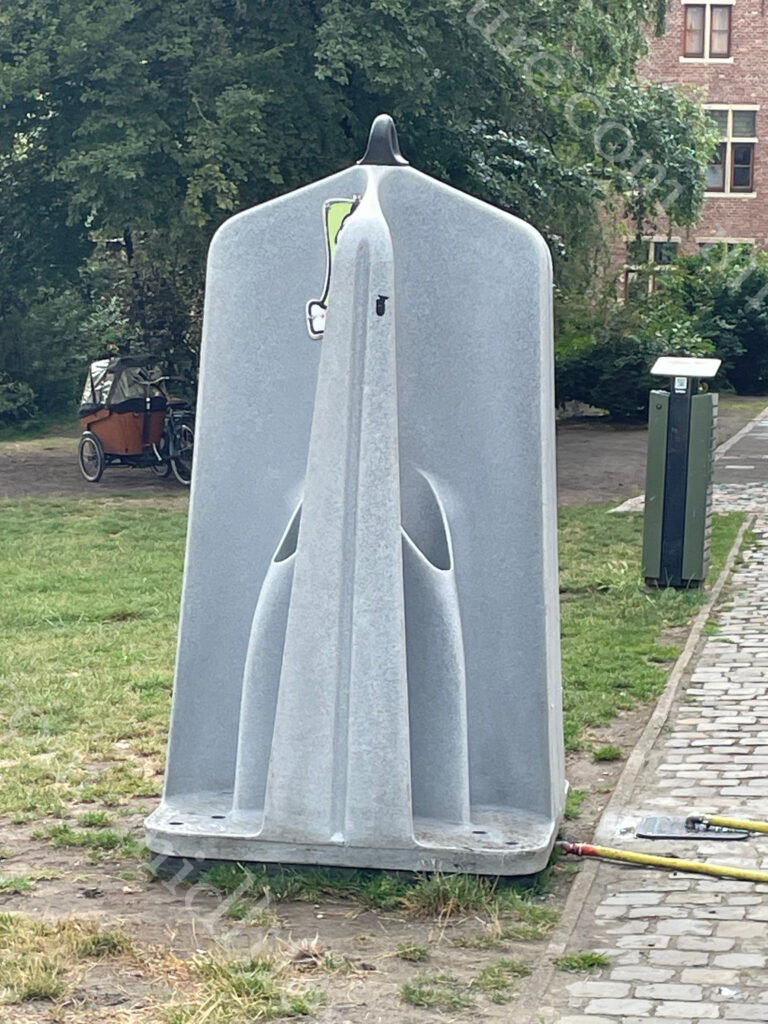
Ok so the real top pick was probably the Castle of Counts. This is a medieval fortress, right in the heart of town, with its defence system virtually intact. Its history dates back to the Roman occupation. The coolest bit was that in 1949 it was occupied by students in a siege situation. They were protesting a rise in beer prices.



Graffiti Street is an area designated to street art, some of which is fantastic. Others however are just senseless defacement. And in a city where an area has been set aside for such pursuits, the senseless stuff still spills over into the surrounding streets, defacing an otherwise charming little town.







Bruges (Brugge)
As Ghent was not very big, and Bruges was a short 30 minute train ride away, the next day we hopped the rattler and headed into Bruges. We got up early (on the Belgium National Day) and headed off to check the place out. The Belgian National day marks the anniversary of the investiture of Leopold I as the first King of the Belgians in 1831. It is a public holiday and saw masses of people flooding into Bruges.
Bruges is Belgium’s most preserved medieval town, and its beautiful architecture attracts more than two million visitors every year. From our perspective, this is the pick of all the places that we have seen so far. In every part of the old city and the path towards it, this is by far the prettiest city that we have seen since beginning our travels.








As we were there on the National Day and the day after the finishing of a major festival, we did not see Bruges at its best. There were temporary structures and scaffolding up around the main square (Jan van Eyck Square) and all of the catering elements were still in place or being pulled down. Despite all of this, we still thought it was the prettiest town that we had visited. We were able to see past the mess to the town underneath, and it was stunning.
Getting around Bruges is pretty easy.
The walking is calm, easy and flat and the Canal boats are simple to find and easy to ride.
But if you really want to get around the horse and cart options are a charming way clip clop along the cobblestoned streets.
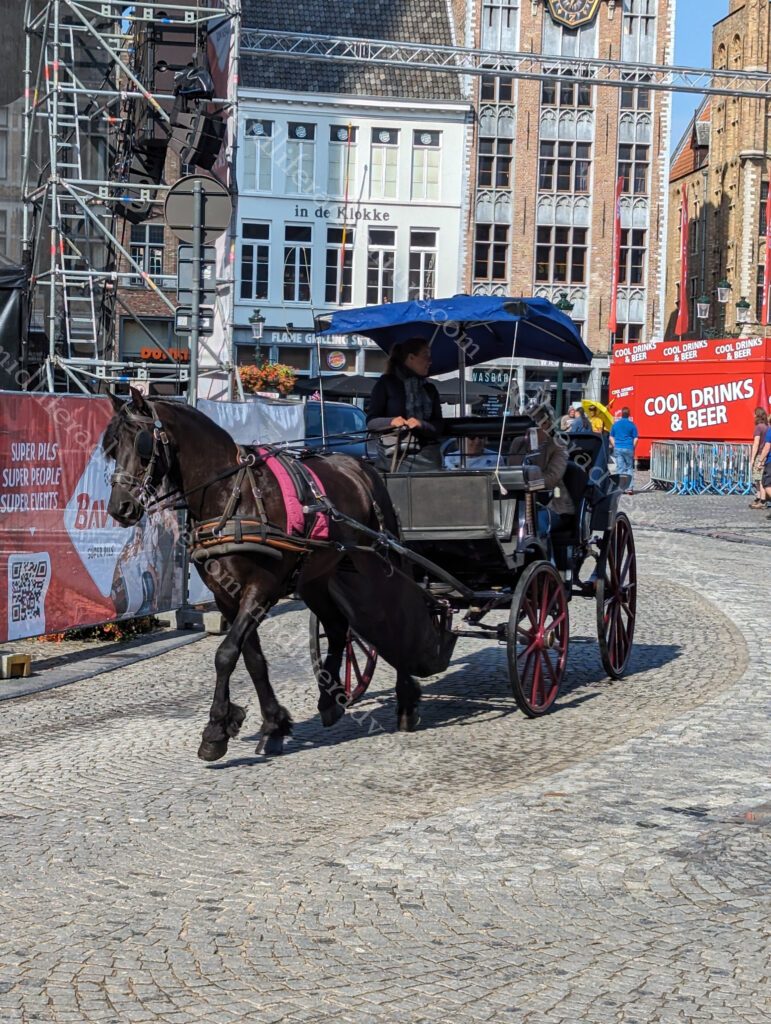
The biggest issue you will face when visiting is that there are a number of towers and not a lot of room to photograph them. So you spend a lot of time taking upward photos that really do not do the target structures justice.
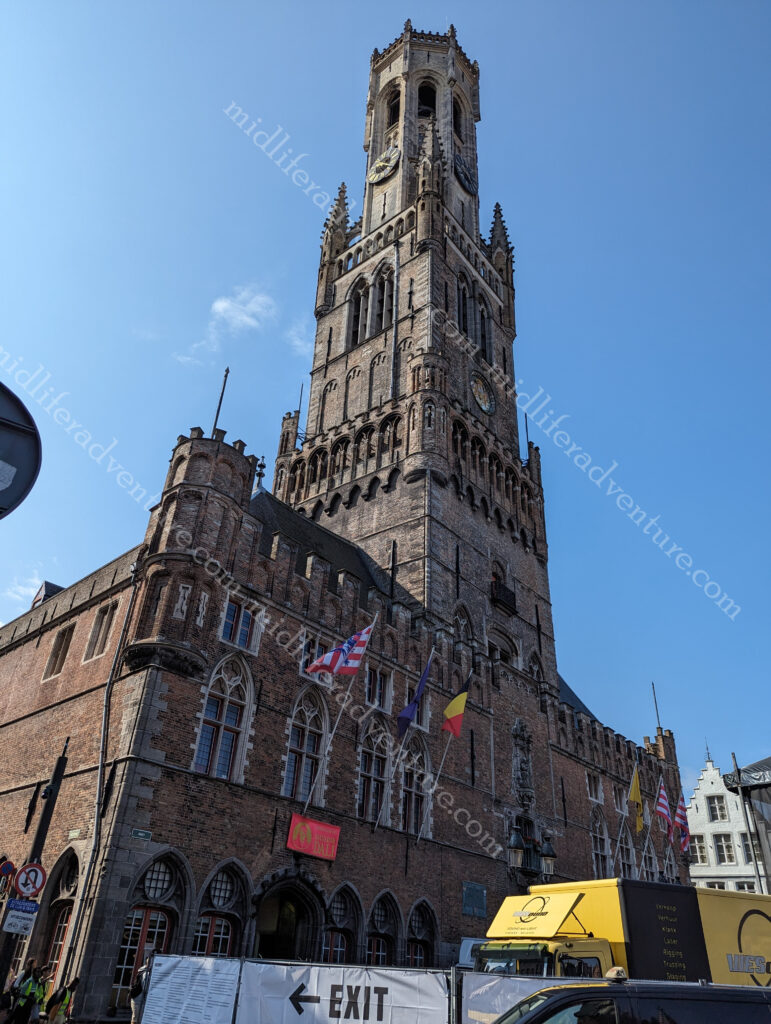
The Belfry of Bruges stands right in the heart of town and is 83 meters tall. Built in the 15th century there is a 366-step climb to the top that is usually available (but not on the day we were here. On the hour the tower rings out a peal from the bells.
As you can see from our photo trucks and scaffolding were ruining our photos, but not detracting from the charm and architecture.
Bruges Markt has been holding a weekly market since 1985. The guild houses have all been converted into restaurants around the outside.
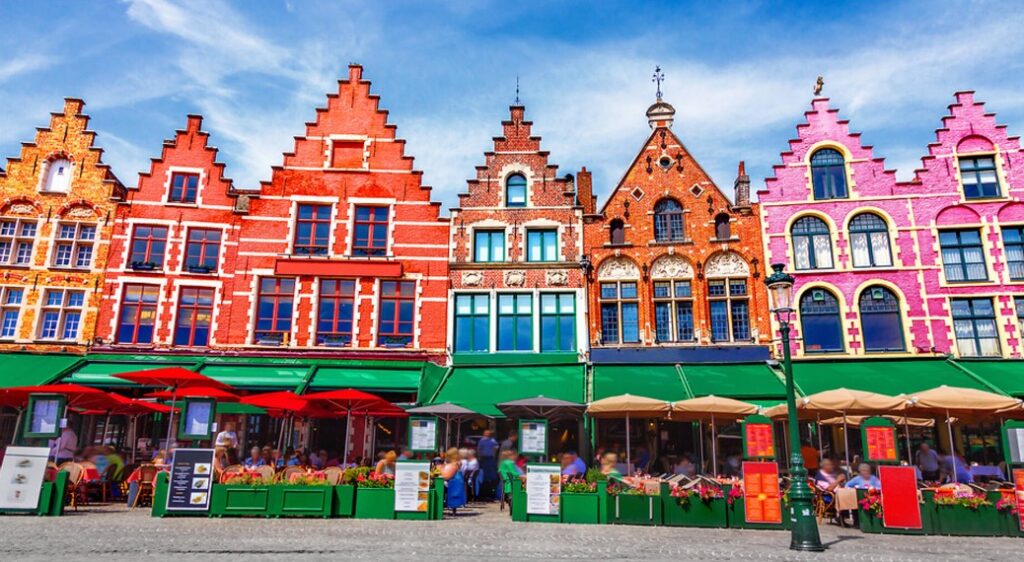
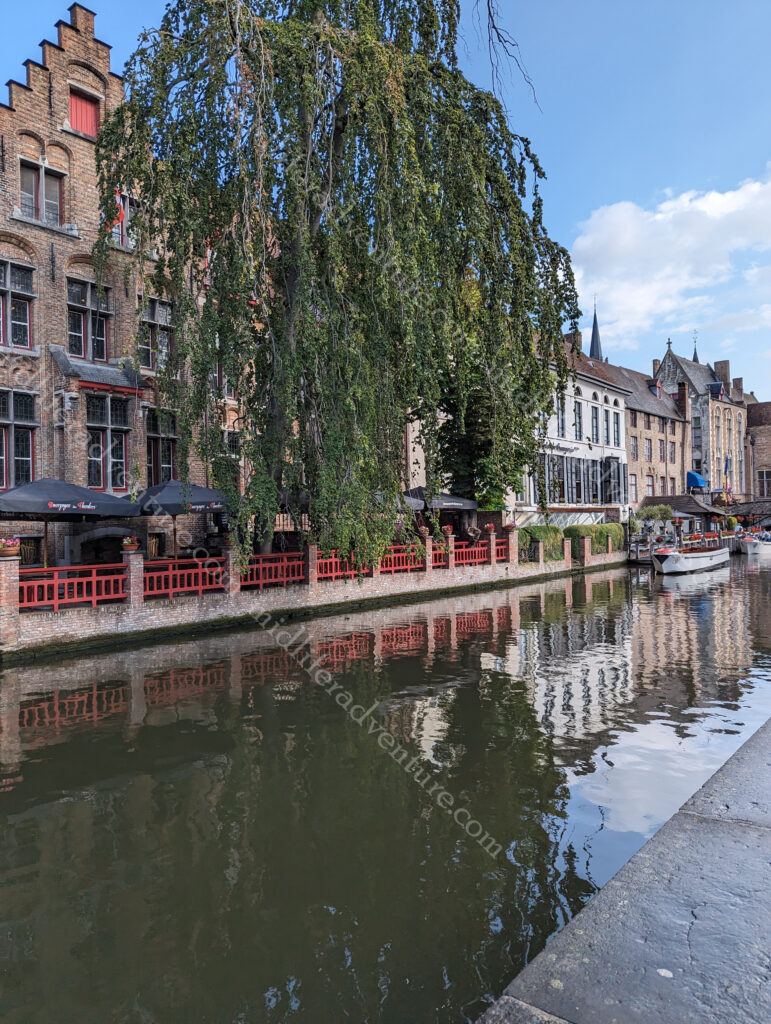
The view of the main canal from the St Boniface Bridge.
While the bridge is fairly modest, its position along the canal makes it a favourite as it provides canal views as well as views of the Church of Our Lady.
It was built in the early-20th-century.
Basilica of the Holy Blood is home to a phial which is said to carry a cloth soaked in Jesus Christ’s blood.
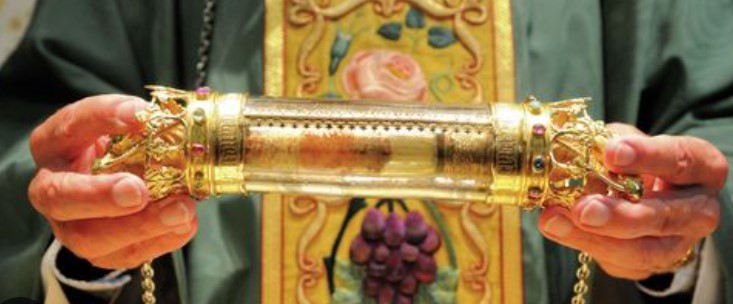
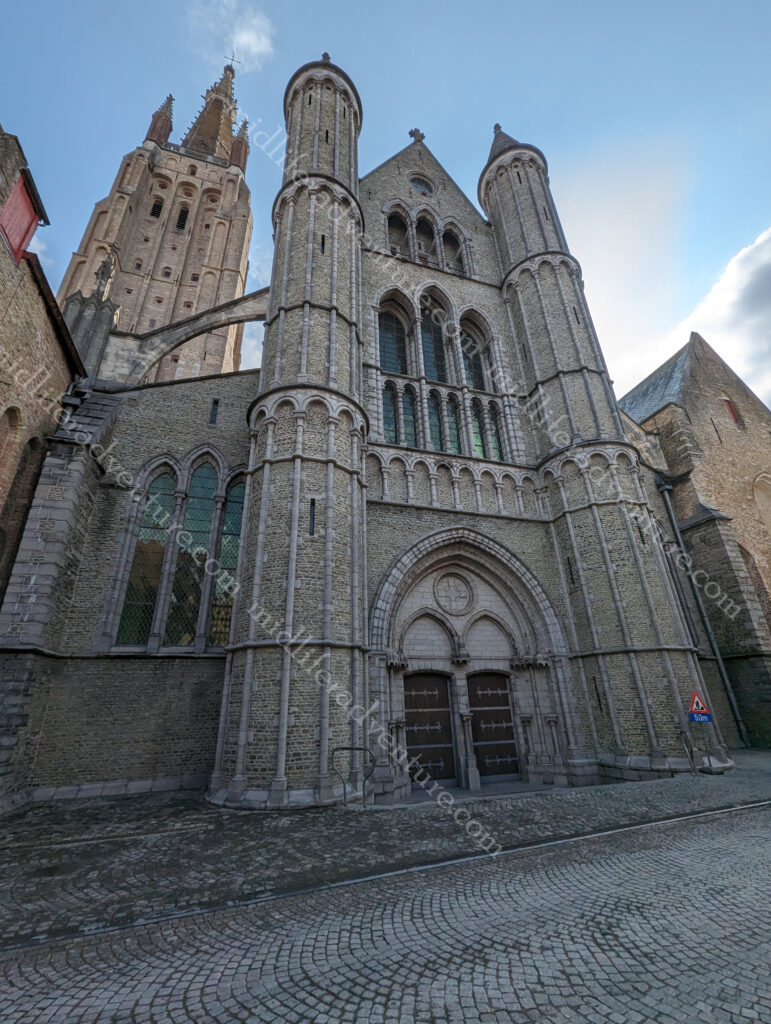
The 112-meter-high spire of the Church of Our Lady (Onze Lieve Vrouwekerk) is the tallest in Belgium.
Work began on the nave and aisles around 1230, the outermost aisles and chapels were added in the 14th and 15th centuries.
The Madonna of Bruges is a marble sculpture by Michelangelo of the Virgin and Child.
It now sits in the Church of Our Lady in Bruges, Belgium.
Sadly this was not open due to the Denmark day festivities.
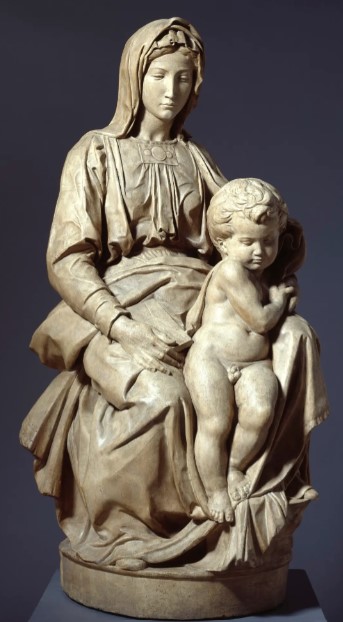
Bruges is lovely




The one thing that Bruges has a ton of is the high end chocolatiers, they are almost everywhere. The next most common stores are the tourist trinket shops and then the waffle houses.
And of course, who could leave Belgium without sampling one of their infamous Belgian Waffles.
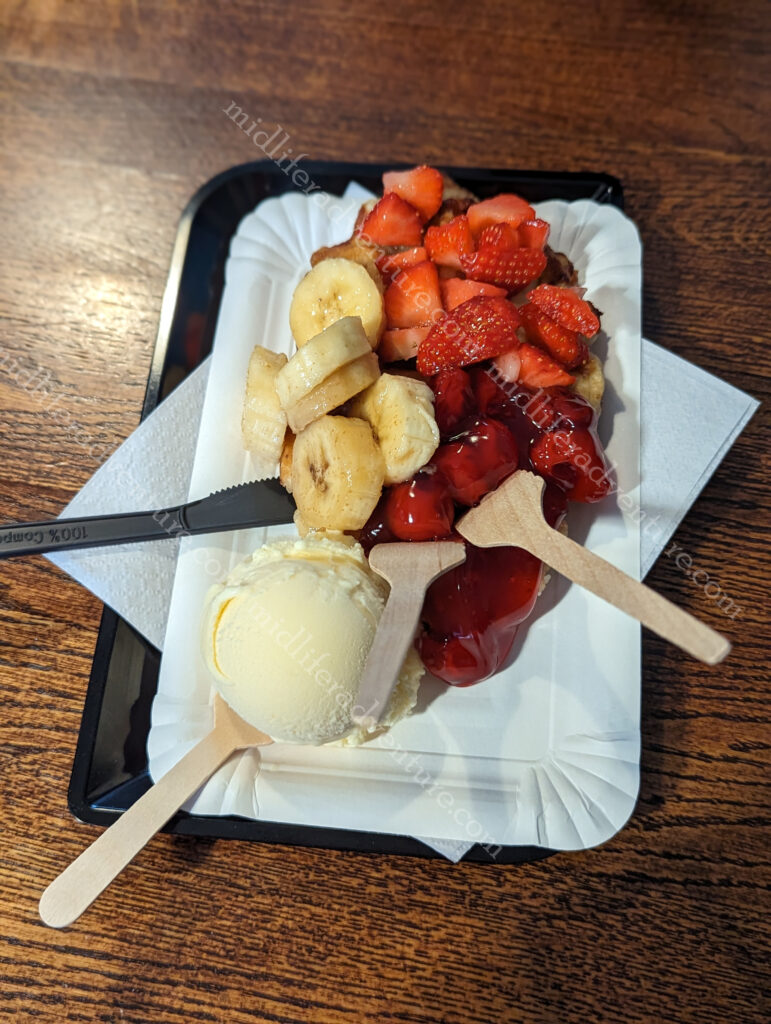
Belgian Beer
When it comes to beer, Belgium is the king. The country counts more than 200 active breweries, including the world’s largest brewer (AB InBev) and dozens of small local breweries, some centuries old. This number then further increased since the recent specialty beer fad came to town.
The most known abbey beers are Trappist beers (which can only be brewed within the abbey walls). Trappists are one of the many religious orders in Belgium. Many beers can also be sold with different alcohol content, starting at 5-6% and going as high as 11-12%.
Like the Dutch, the Belgians have embraced the special glass for each beer (not sure which one actually came first). Whichever one of them started it, it is a fantastic way of taking the beer-drinking experience to another level.









There are over 1600 registered beers in Belgium. While we were able to dip our toe into this pool, that is about as good as we could get. A few days does not allow for two people to make a dent in a list of 1600+.
The right glass
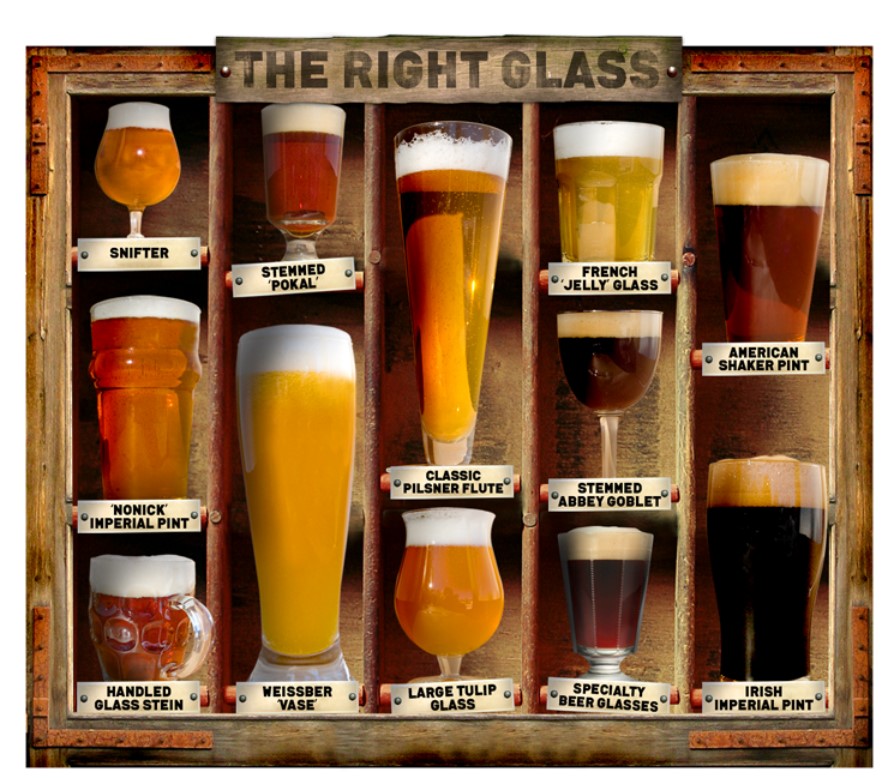
The Belgian experience suggests that the glasses help bring out the best in your beer.
Different types of beer glasses help compliment different styles.
With the right combination of beer and glass, the aroma, taste and steady carbonation of the beer will be greatly complimented. The blurb suggest that you “Think of the glass as a suit or dress that fits you SO WELL and calls attention to all the right parts, showing no flaws”.
That is the job of the glass.